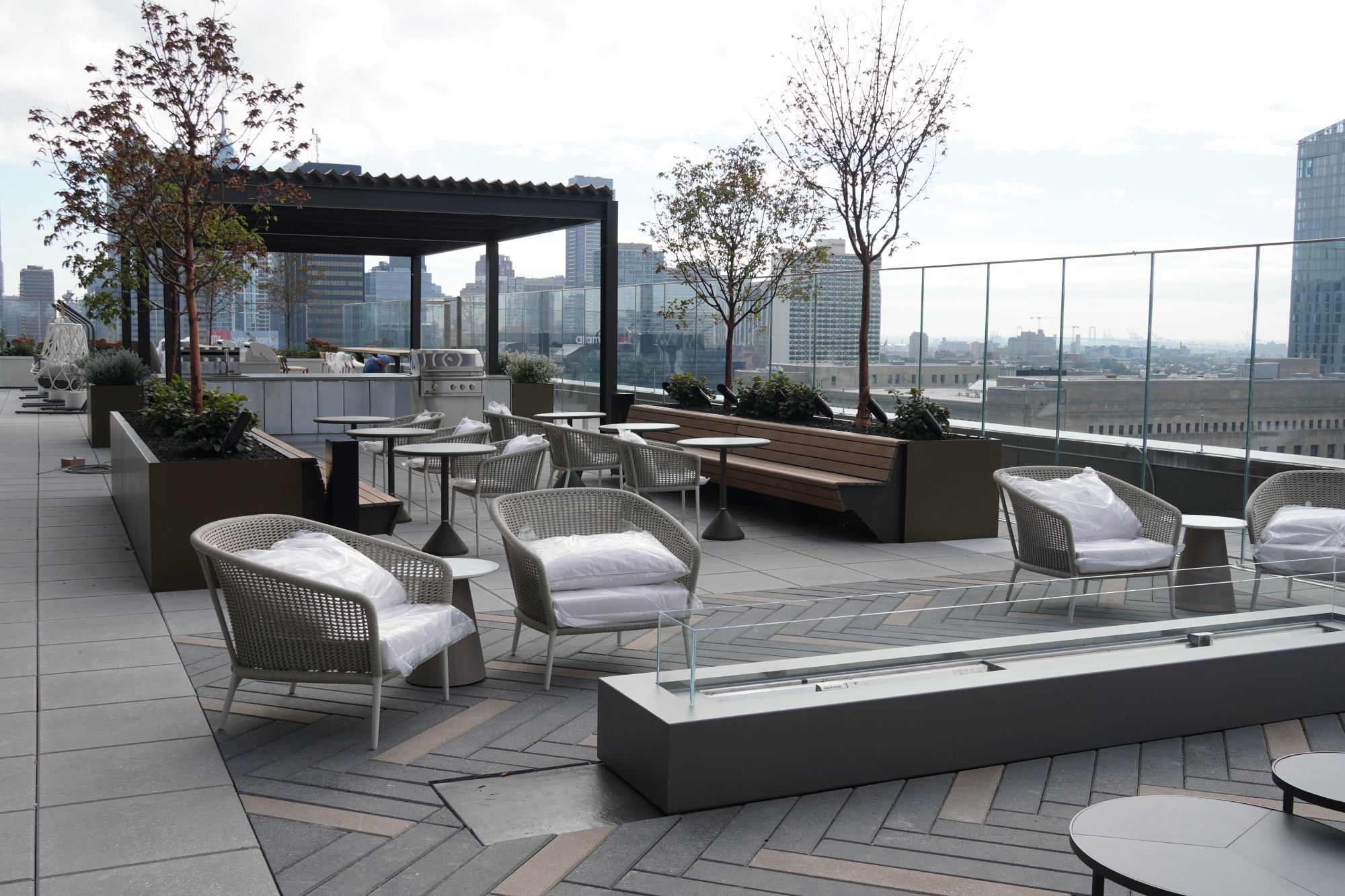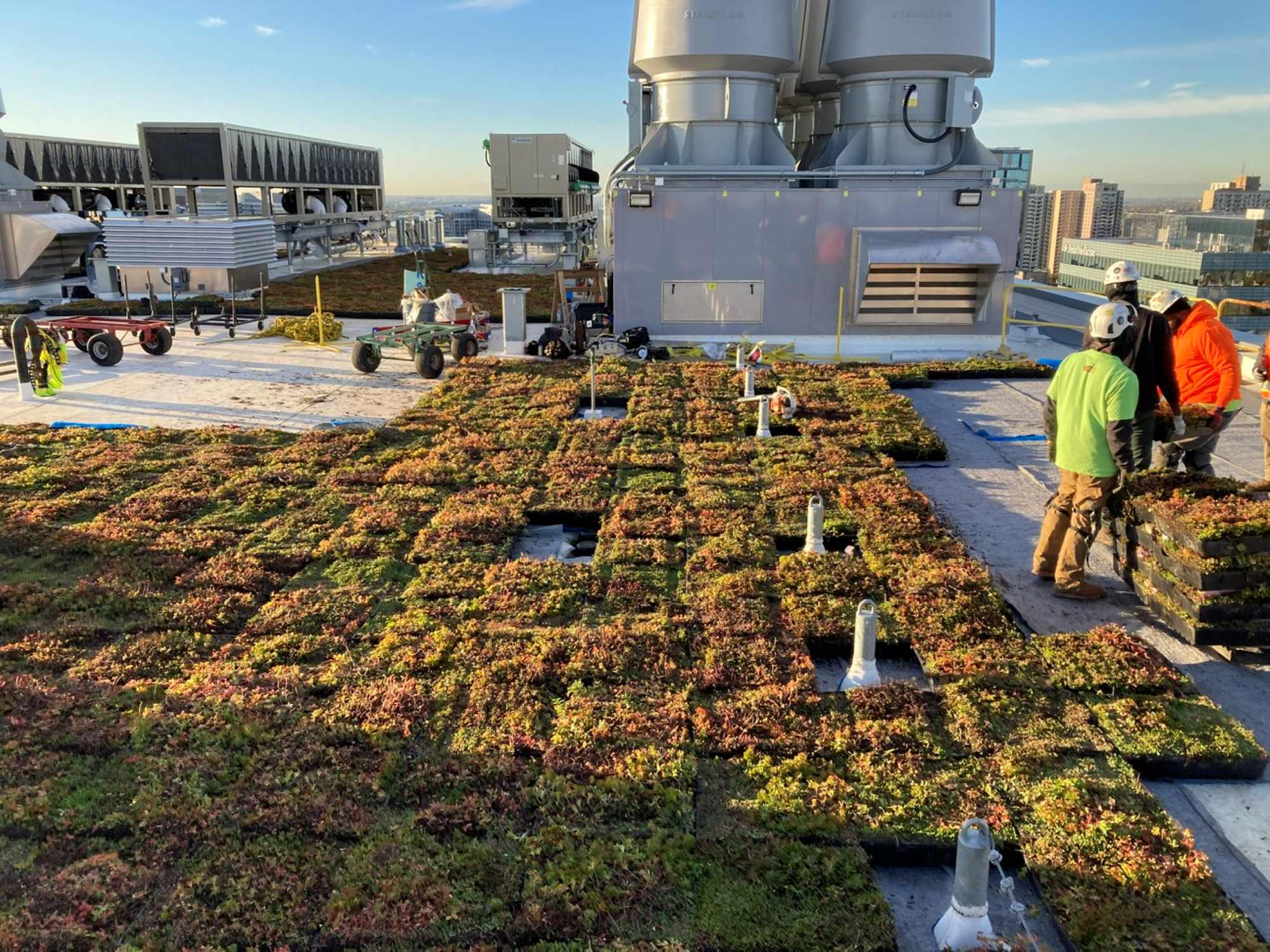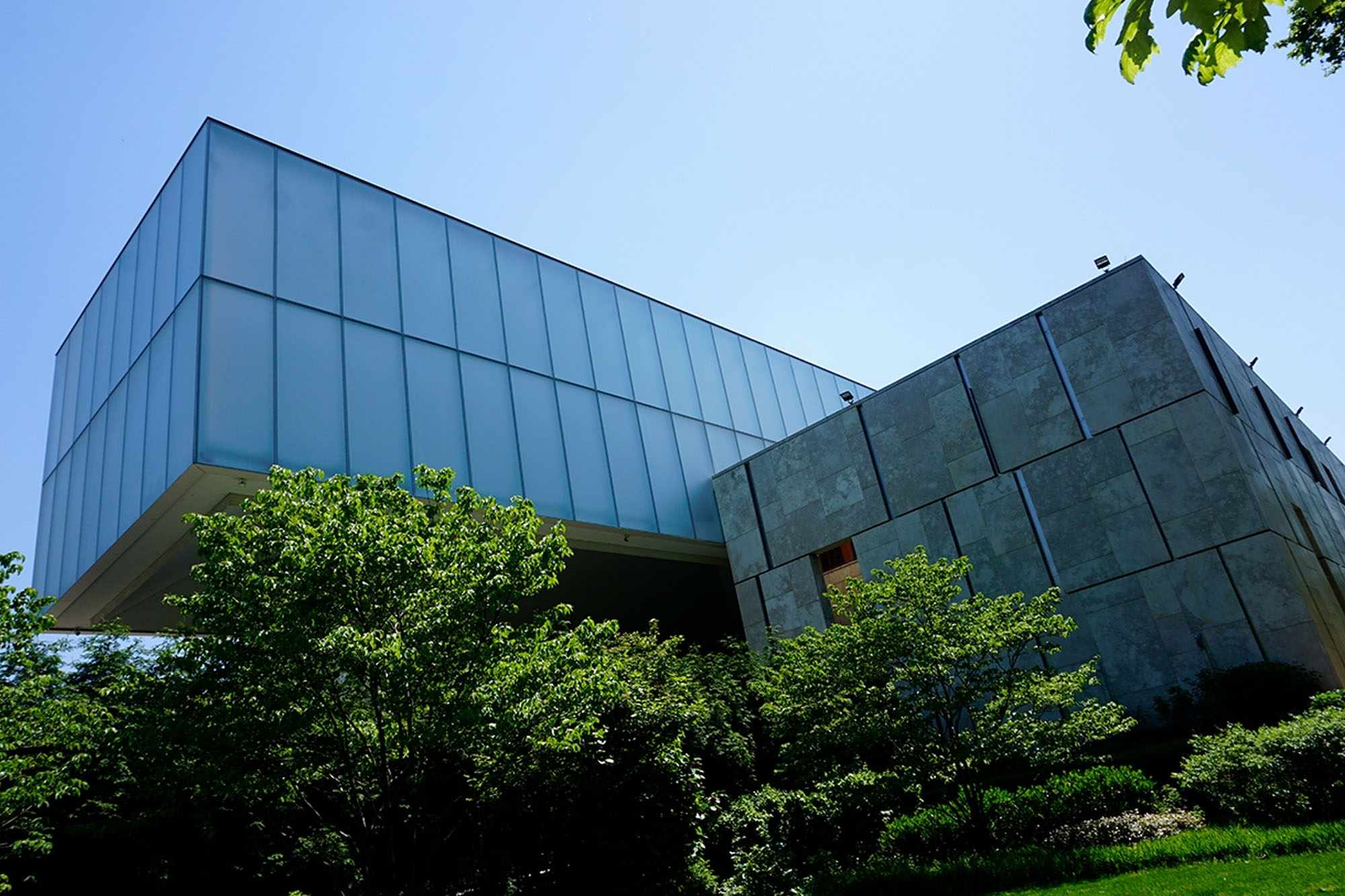green roof systems
Types of Green Roof Systems
Extensive Vegetated System
An extensive vegetative system is one that is less than 6 inches thick of soil (typically 4 inches) along with sedum plantings.
Intensive Vegetated System
Intensive vegetative assemblies have a medium depth, that are greater than 6 inches, with various plantings to include trees, shrubs and other large vegetation. Intensive green roofs are typically used in amenities spaces and other accessible areas for both viewing and recreation.
Semi-intensive Vegetated System
Semi-intensive green roofs are a combination of both intensive and extensive systems. When managing costs with the need to beautify and manage storm water, semi-intensive assemblies are a great option.
Sloped Vegetated System
Sloped vegetative assemblies are green roofs installed on steep slope roof structures. Expensive and challenging to construct, sloped vegetative systems require structural enhancements to anchor material in place.
Vegetated Tray Systems
Vegetative trays are pre-grown at a nursery farm and installed on the roof by interconnecting the trays. Trays are best used for small areas such as canopies and other difficult to access areas.
Green Roof Systems Projects
Have Questions About Your Project?
At EDA, our number one goal is to deliver a watertight building to every client. We’re so confident in the quality of our work that when you link two or more of our exterior services together, we’ll add on a 10 year all-inclusive warranty, free of charge. No more back and forths between contractors — we’ve got you covered.



